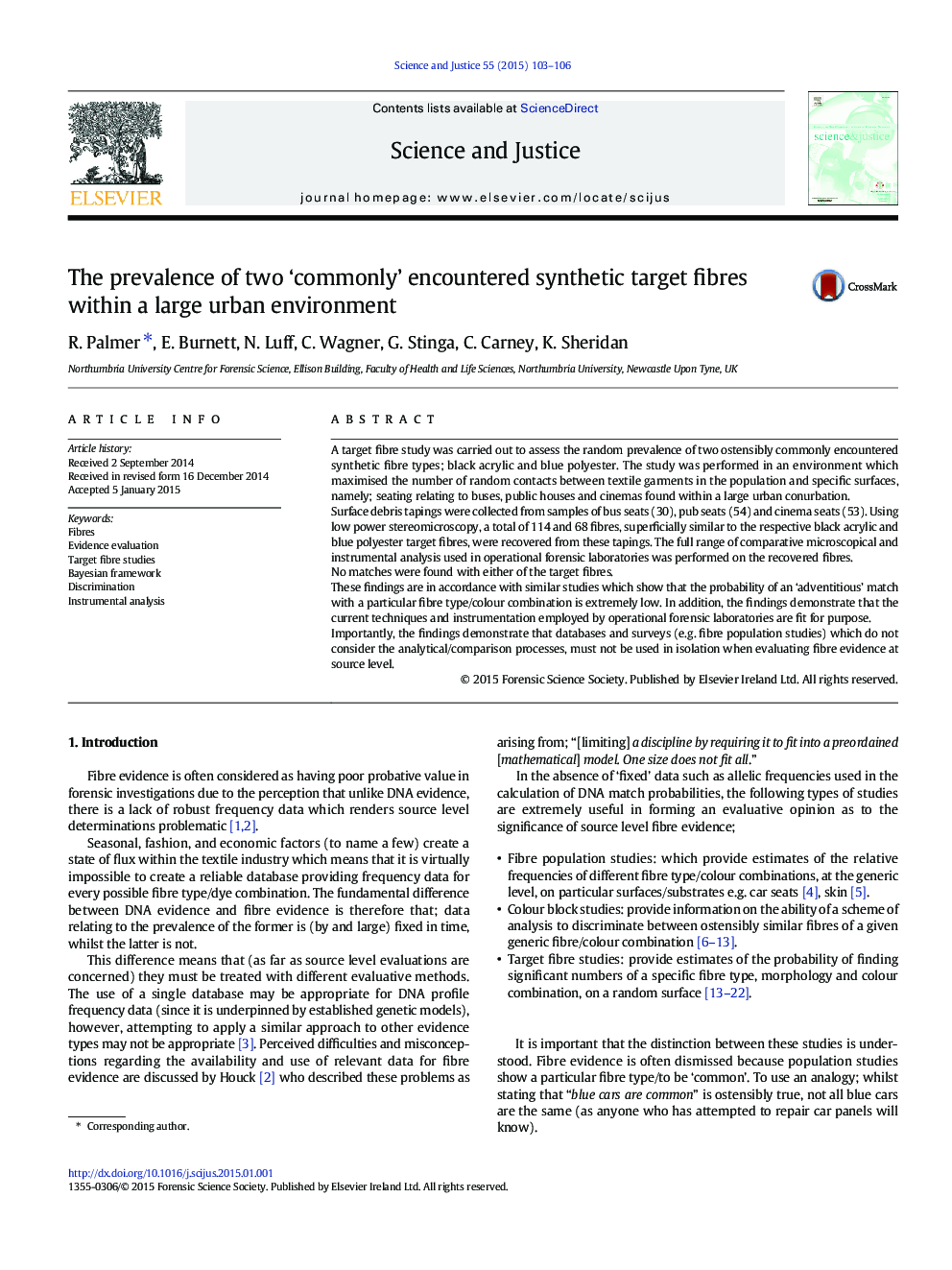| Article ID | Journal | Published Year | Pages | File Type |
|---|---|---|---|---|
| 106937 | Science & Justice | 2015 | 4 Pages |
•We address the paucity of target fibre studies in the last decade.•We show that current analytical techniques employed in fibre analysisare fit for purpose.•We demonstrate that the chances of encountering a given target fibre by chance are extremely small.
A target fibre study was carried out to assess the random prevalence of two ostensibly commonly encountered synthetic fibre types; black acrylic and blue polyester. The study was performed in an environment which maximised the number of random contacts between textile garments in the population and specific surfaces, namely; seating relating to buses, public houses and cinemas found within a large urban conurbation.Surface debris tapings were collected from samples of bus seats (30), pub seats (54) and cinema seats (53). Using low power stereomicroscopy, a total of 114 and 68 fibres, superficially similar to the respective black acrylic and blue polyester target fibres, were recovered from these tapings. The full range of comparative microscopical and instrumental analysis used in operational forensic laboratories was performed on the recovered fibres.No matches were found with either of the target fibres.These findings are in accordance with similar studies which show that the probability of an ‘adventitious’ match with a particular fibre type/colour combination is extremely low. In addition, the findings demonstrate that the current techniques and instrumentation employed by operational forensic laboratories are fit for purpose.Importantly, the findings demonstrate that databases and surveys (e.g. fibre population studies) which do not consider the analytical/comparison processes, must not be used in isolation when evaluating fibre evidence at source level.
